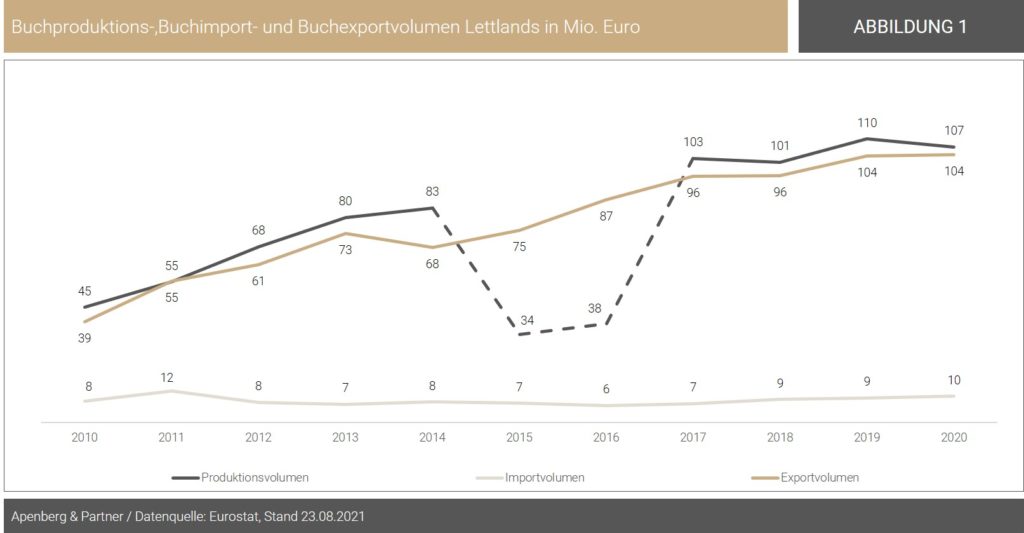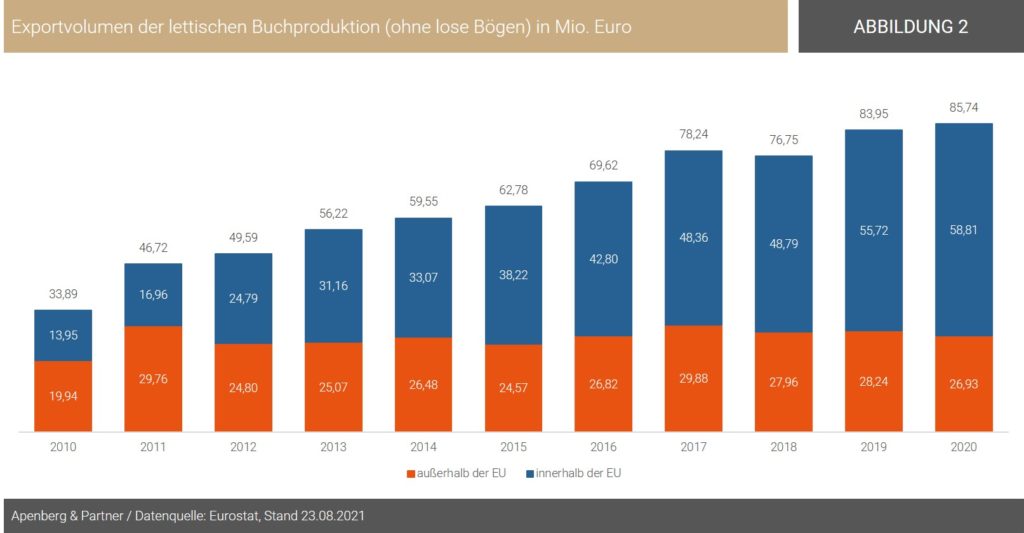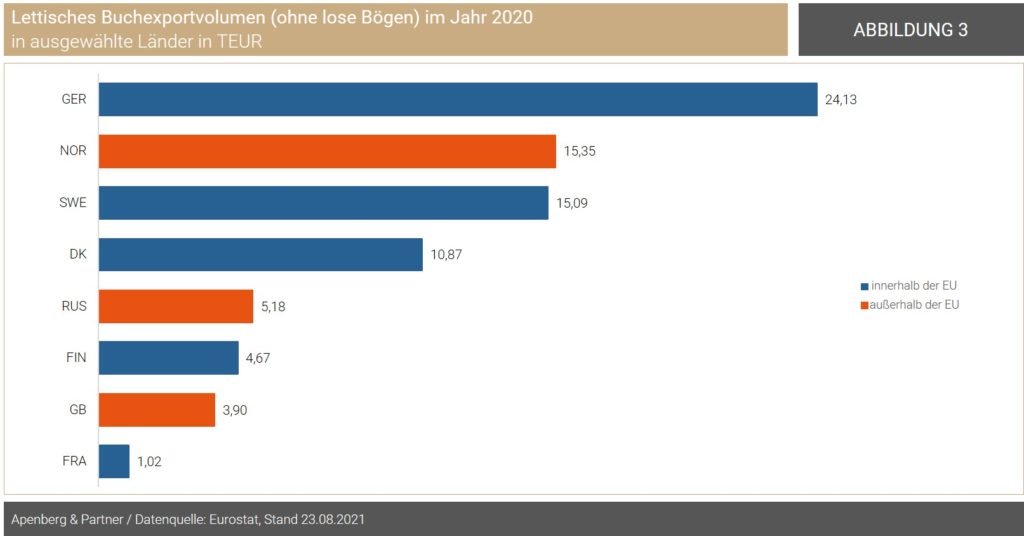Myth of Riga
For some time now, Latvia, and Riga in particular, has been repeatedly cited as an explanation when it comes to publishers demanding lower and lower prices for the production of their books or printers losing lucrative orders. Apenberg & Partner has taken up this issue and undertaken research on Latvian book production and its export, as well as German book import.
Latvia exports most of its book production. Exports and book production have increased at the same rate.
Figure 1 shows the development of Latvian book production, as well as the import and export volume of books produced in millions of euros. It is striking that both the production volume and the export volume have more than doubled since 2010 and in 2020 were 107 million euros (production volume) and 104 million euros (export volume) respectively. The import volume2 increased by 2 million euros to 10 million euros in the period from 2010 to 2020. The low book production volume in 2015 and 2016 is due to incomplete data rather than a collapse in production volume and is therefore shown as a dashed line.


Around 82 percent of the book production volume exported by Latvia belongs to the category “books without loose sheets”. In the following, we always refer to the category “books without loose sheets” when we talk about books.
Figure 2 shows how the export volume of Latvian book productions is distributed between countries within and outside the EU. The export volume to non-EU countries has changed only slightly in the period from 2010 to 2020, increasing from 19.94 million euros in 2010 to 26.93 million euros in 2020. The export volume to EU member states has more than quadrupled to 58.81 million euros in the same period. The main driver of this development is Germany, whose import volume from Latvia has been growing at a CAGR of 40 per cent since 2010 and will account for approximately 41 per cent of Latvia’s beech exports to the EU in 2020, at 24.13 million euros.
Figure 3 shows the top 8 importers of books produced in Latvia. Besides the largest importer Germany, Scandinavia, Russia, Great Britain and France are represented there. They all import books worth at least €1 million annually. Denmark (€10.87 million), Sweden (€15.09 million), Norway (€15.35 million) and Germany (€24.13 million) achieve import volumes of over €10 million.
The books imported from Latvia with a value of 24.13 million euros represent only a small size compared to the books produced in Germany. The value of books produced in Germany was 457 million euros in 2020.
For 2021, Apenberg & Partner forecast that the export volume of Latvian book production will continue to increase slightly. The export volume of book production excluding loose sheets will increase to countries outside the EU to 29.8 million euros, to countries within the EU to 61.9 million euros and to Germany in particular to 28.8 million euros.
The value of the production volume results from the value of the production sold (Source Eurostat, link: Statistics on the production of manufactured goods (prom) (europa.eu)).
The value of the import/export volume corresponds to the value of the goods invoiced at the national border (Source Eurostat, Link: International trade in goods – aggregated and detailed data (europa.eu))
